Resources
Here you can search external resources from STOP Spillover's experts (tagged in blue) and resources developed by the STOP Spillover project (tagged in red).
We found 21 resources.
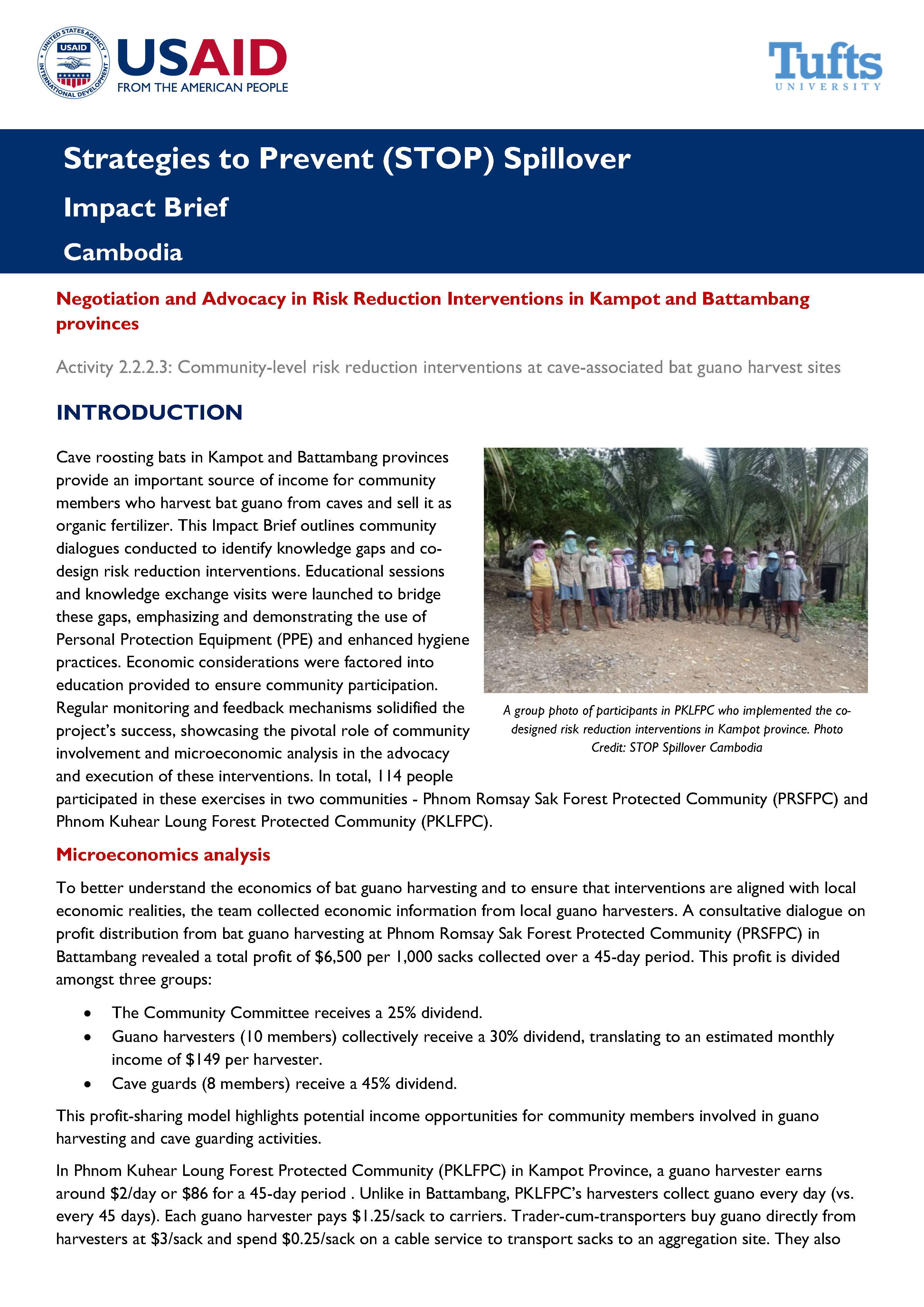
This brief summarizes community dialogues conducted to identify knowledge gaps related to the risks associated with bat guano harvesting and co-design risk reduction interventions, as well as educational sessions that were held to highlight and demonstrate the use of personal protective equipment and enhanced hygiene practices.
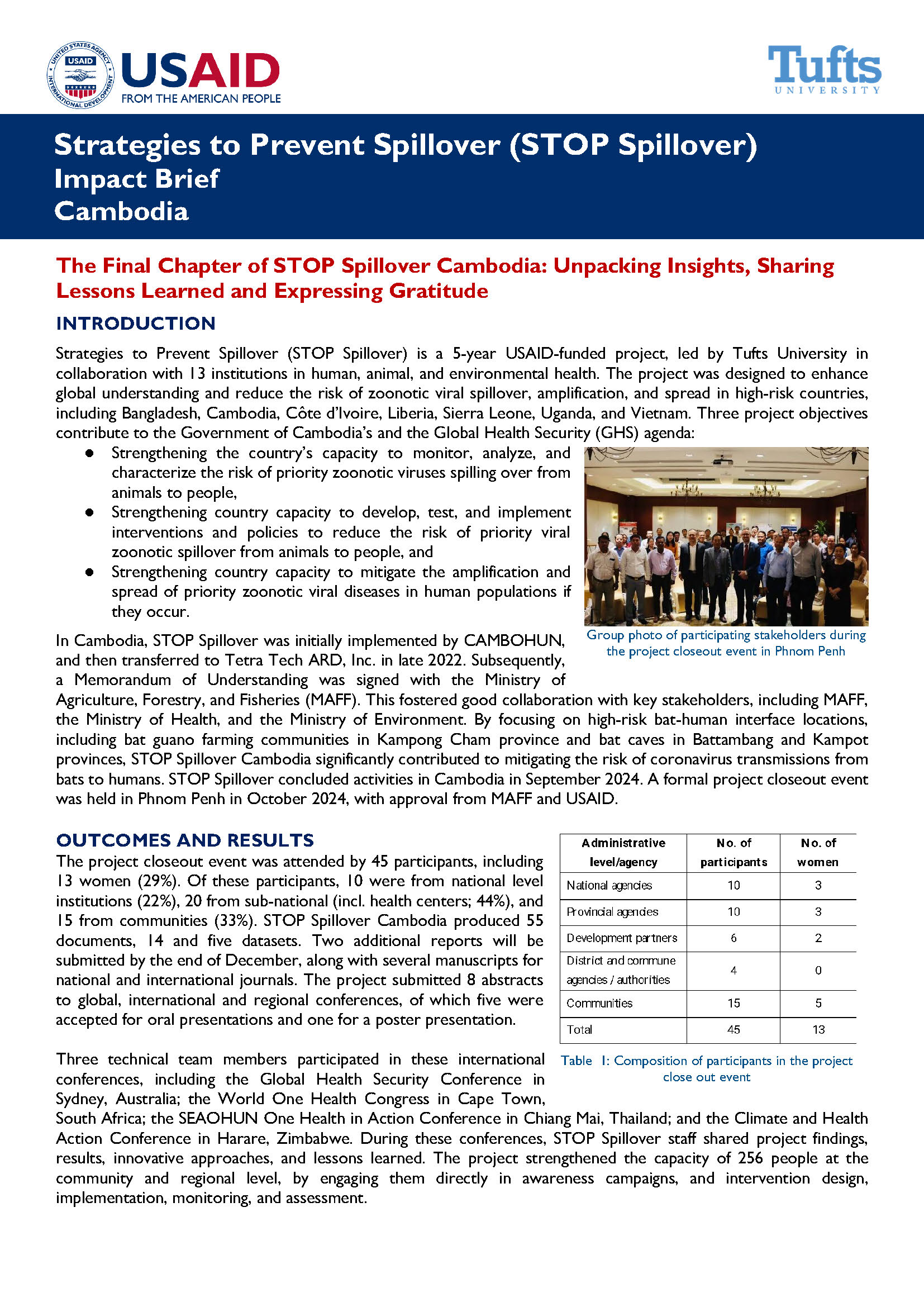
This brief describes the formal project closeout event for STOP Spillover Cambodia, which was held in September 2024.
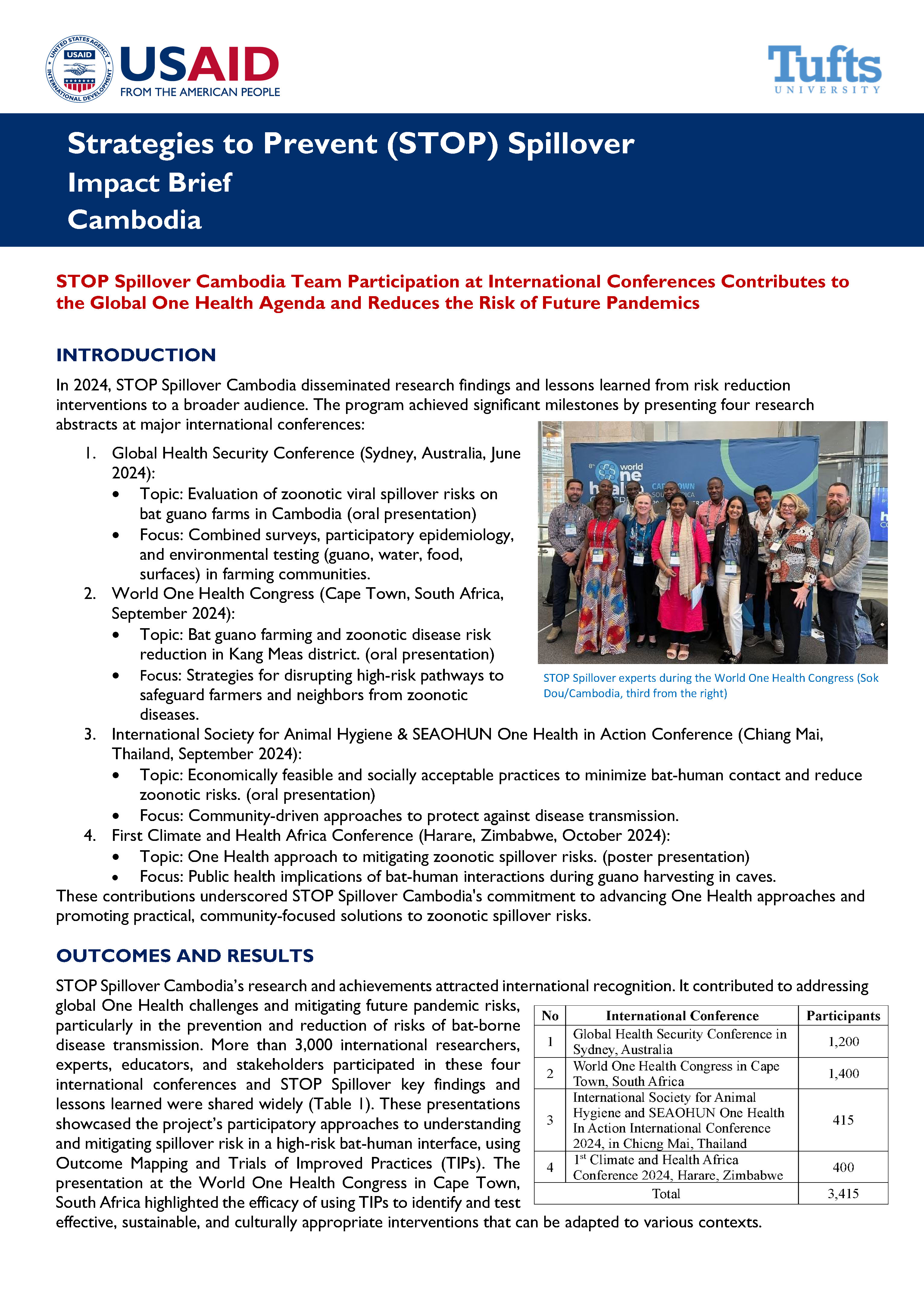
This brief describes the STOP Spillover Cambodia Country Team's dissemination of research findings and lessons learned from risk reduction interventions at four major international conferences.
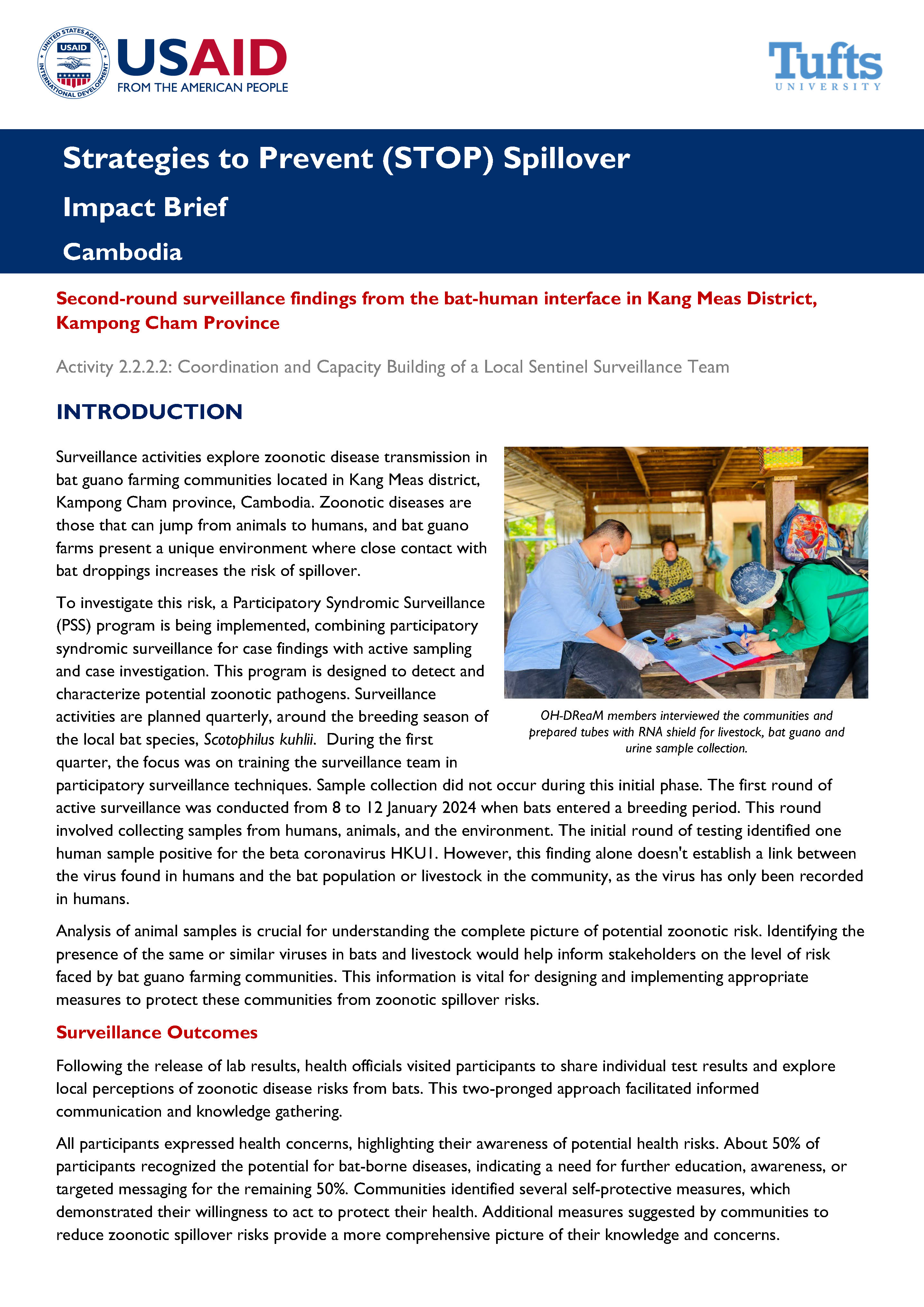
This brief describes the second round of surveillance conducted by the Participatory Syndromic Surveillance team, which combined participatory syndromic surveillance for case findings with active sampling and case investigation.

This STOP Spillover poster, presented at the 8th World One Health Congress 2024, describes the project's use of two unique participatory tools—Outcome Mapping and Trials of Improved Practices—to engage local stakeholders from the planning stage to designing, testing, and implementing interventions that are more sustainable.
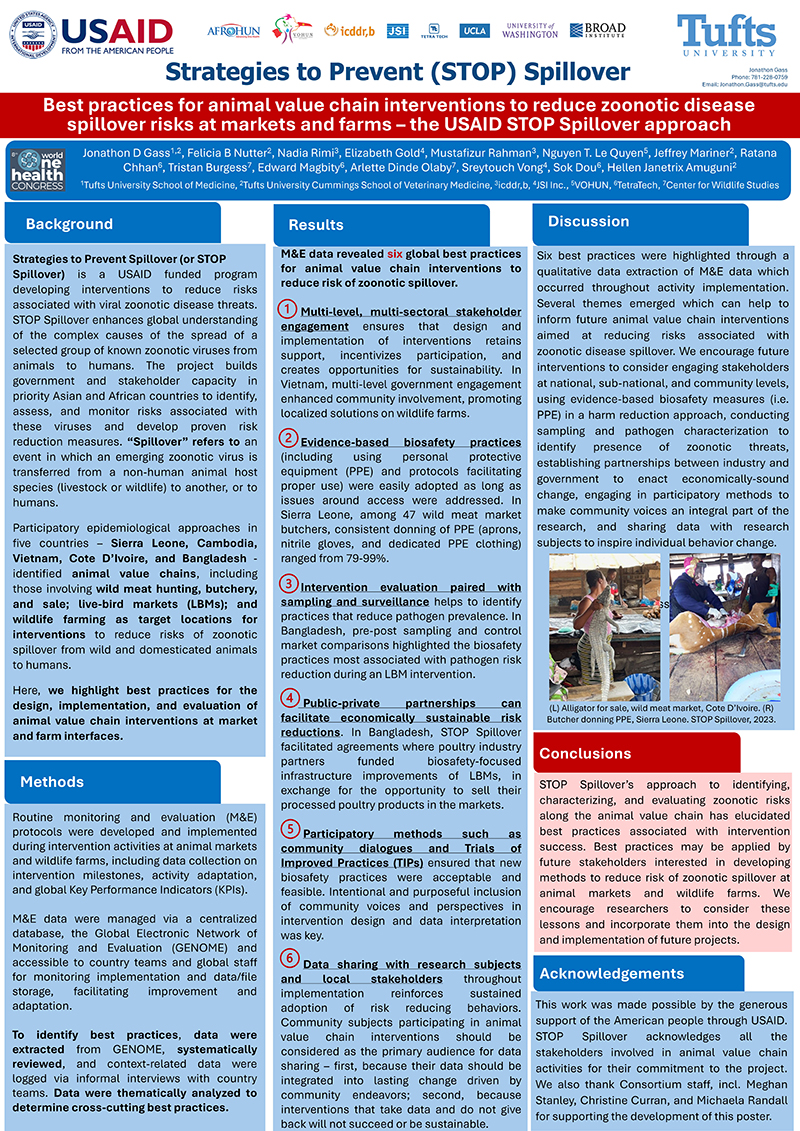
This STOP Spillover poster, presented at the 8th World One Health Congress 2024, describes six best practices for the design, implementation, and evaluation of animal value chain interventions at market and farm interfaces. The best practices were identified through qualitative data extraction of monitoring and evaluation data.

A Protocol for Evaluating Community-Level Zoonotic Disease Risk Reduction Interventions
This STOP Spillover poster, presented at the 8th World One Health Congress 2024, describes the project's approach to intervention validation, which was designed via stakeholder engagement and an iterative process across seven countries in South and Southeast Asia and Sub-Saharan Africa to address risks associated with wildlife farming, wild meat markets, and community-level biosafety interventions at various non-human animal-human interfaces.

This brief describes the fourth seasonally distributed round of bat guano and urine sampling to identify bat pathogens present at bat guano farms, evaluate the frequency and seasonality of coronavirus shedding by bats at bat guano farms, and provide scientific evidence to inform the design of interventions to reduce the risk of exposure to bat-associated pathogens.
This brief describes a three-day monitoring and technical support effort in the bat guano producing communities in Kang Meas District in Kampong Cham province. The purpose of the activity was to provide support to reinforce the adoption of biosafety and hygiene practices, and identify challenges and barriers to adopting and sustaining improved practices.
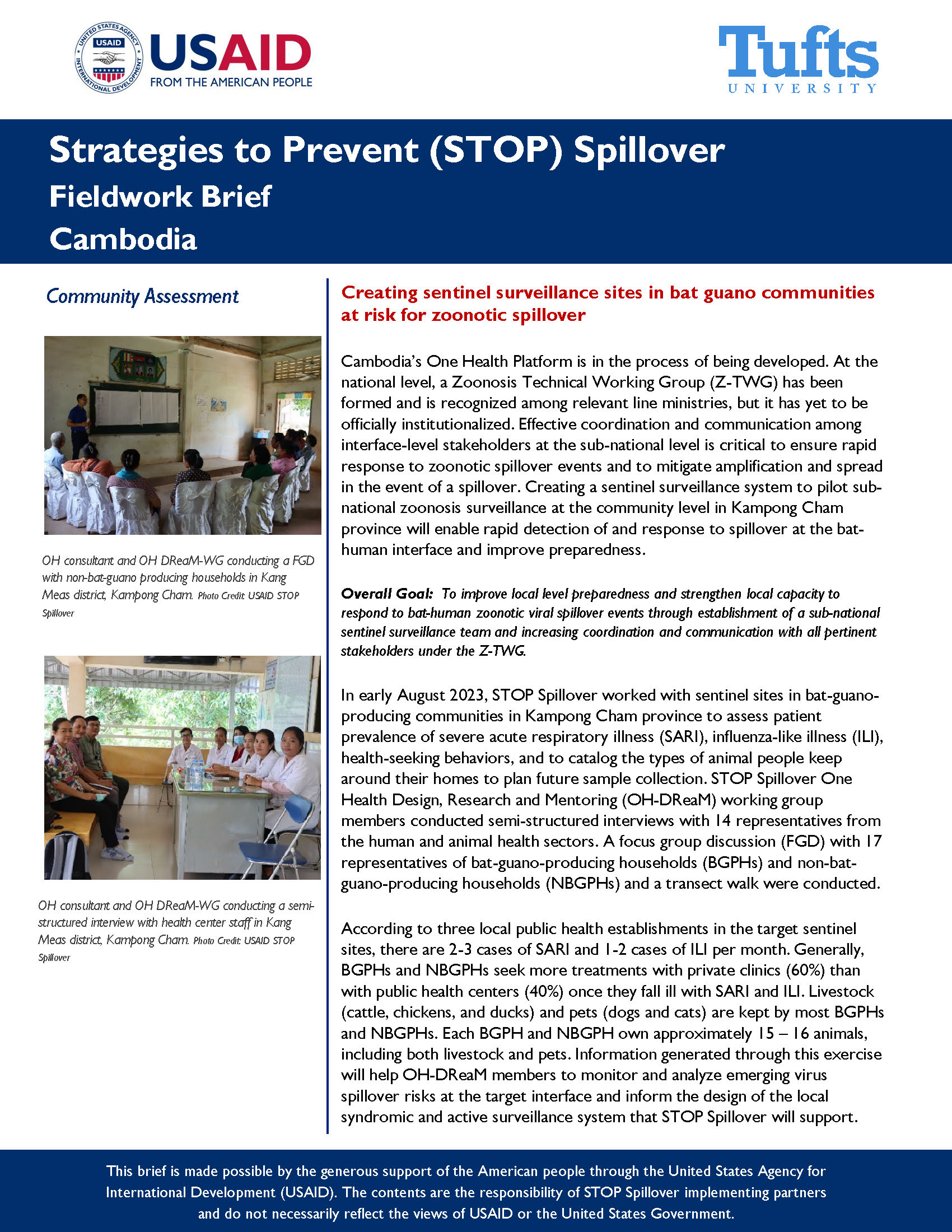
This brief describes the STOP Spillover Cambodia Country Team's work at sentinel sites in bat-guano-producing communities in Kampong Cham province to assess patient prevalence of severe acute respiratory illness, influenza-like illness, and health-seeking behaviors, and to catalog the types of animals kept near homes.
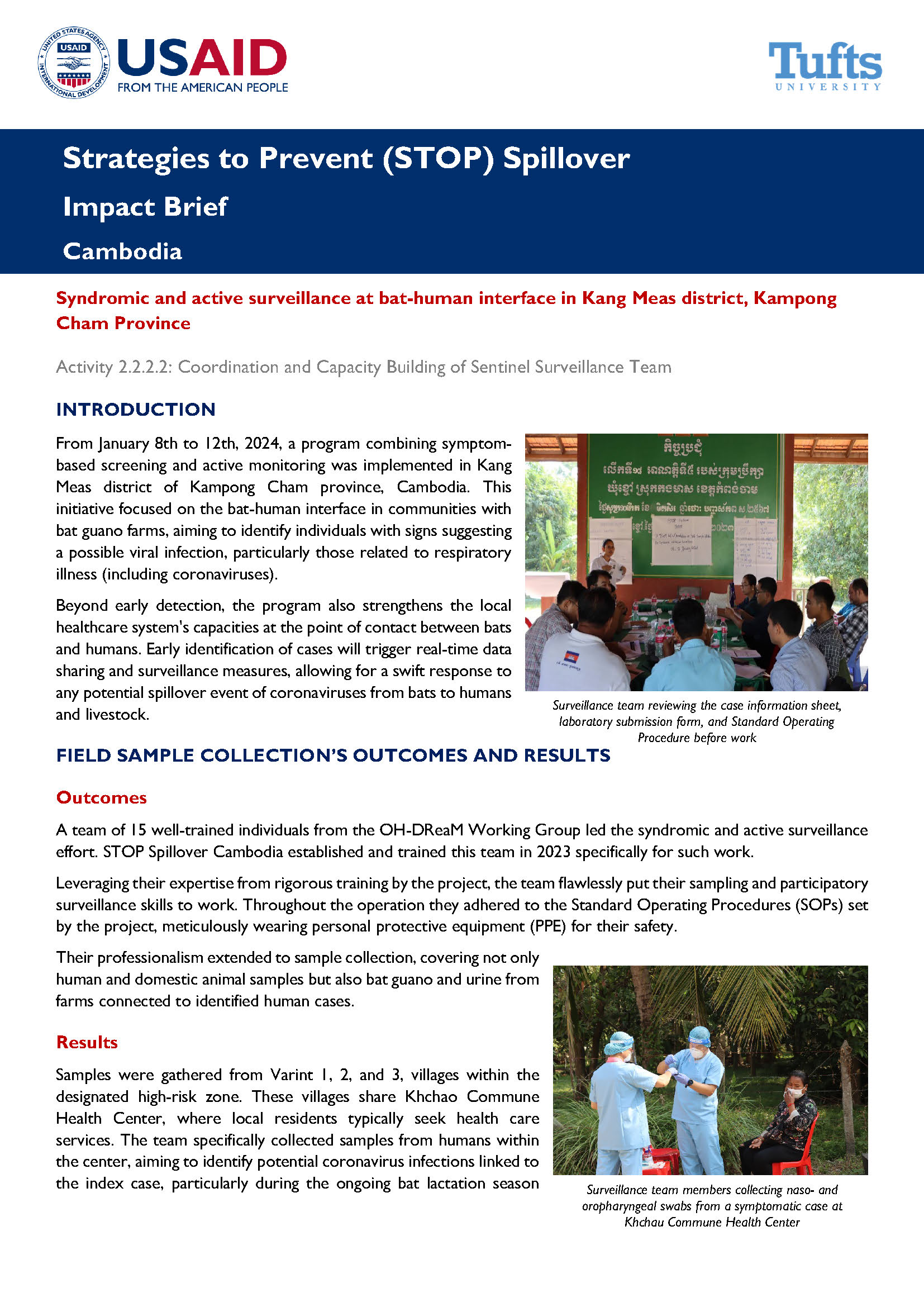
This brief describes symptom-based screening and active monitoring that focused on the bat-human interface in communities with bat guano farms in the Kang Meas District of Kampong Cham province, Cambodia. The initiative aimed to identify individuals with signs suggesting a possible viral infection, particularly those related to respiratory illness, including coronaviruses.
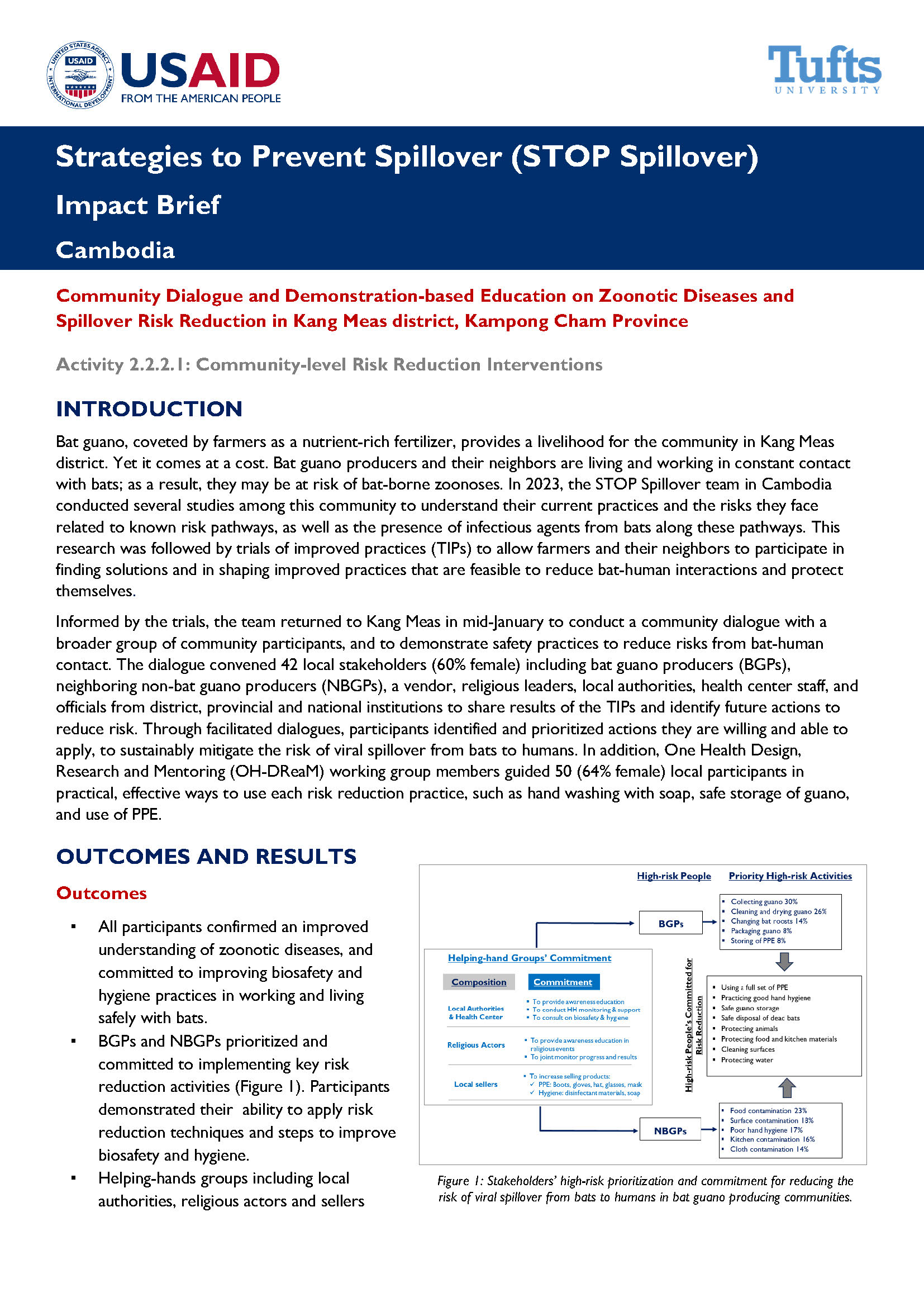
This brief describes a dialogue with community stakeholders to demonstrate safety practices to reduce risks from bat-human contact and to identify and prioritize actions that participants were willing to take to mitigate the risk of viral spillover from bats to humans.
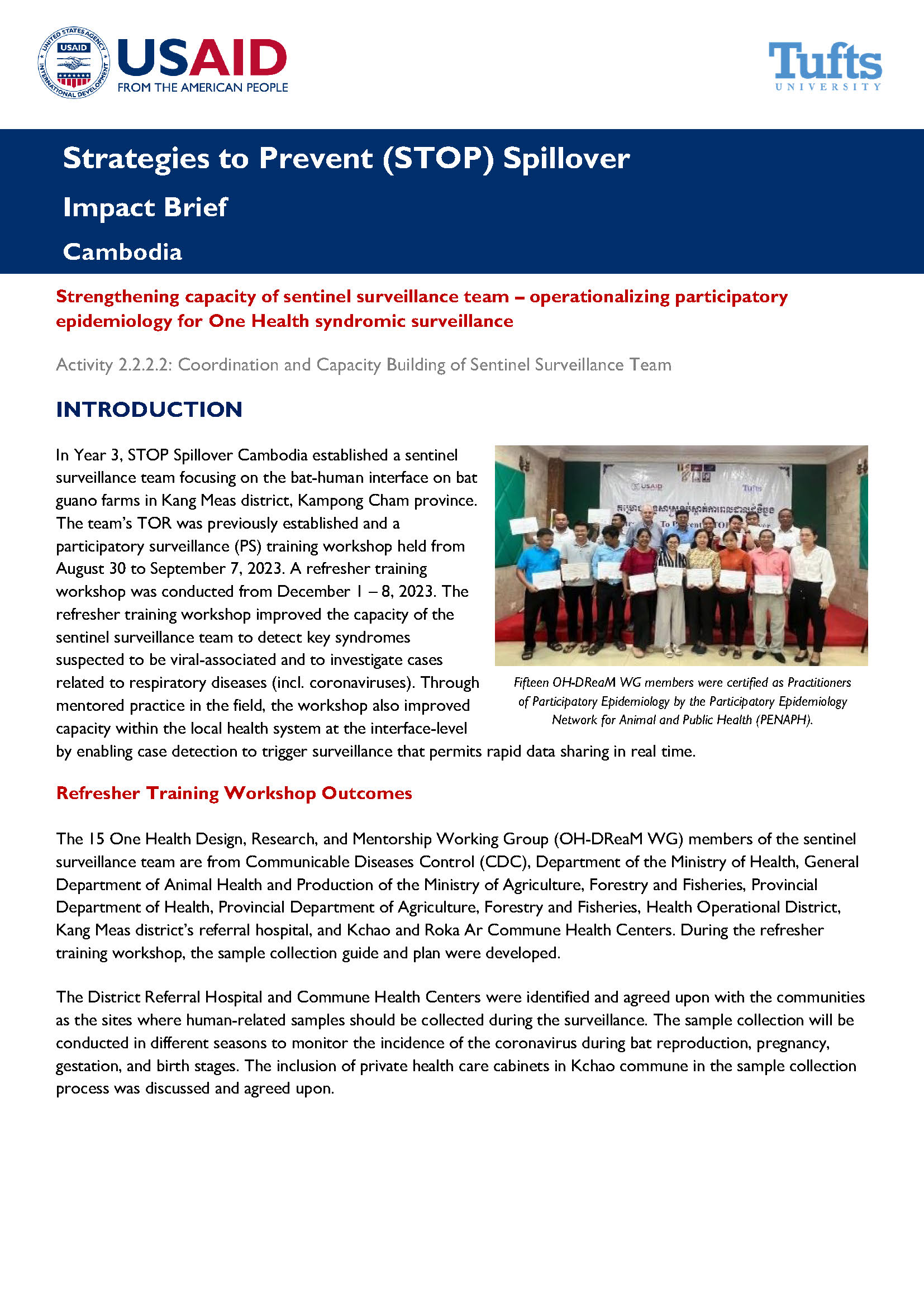
This brief summarizes a participatory surveillance refresher training to improve the capacity of a sentinel surveillance team to detect key syndromes suspected to be viral-associated and to investigate cases related to respiratory diseases, including coronaviruses.
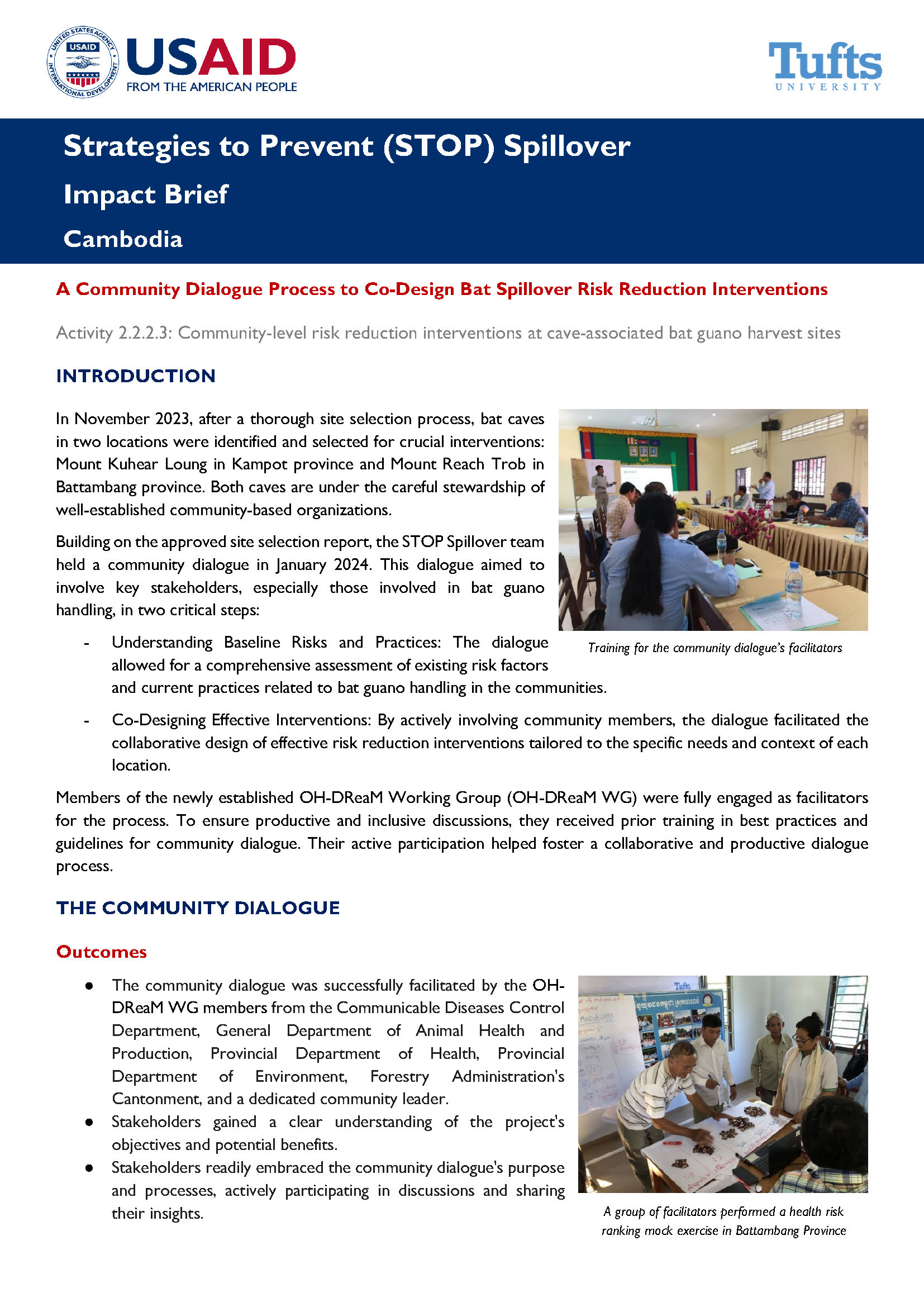
Impact Brief: A Community Dialogue Process to Co-Design Bat Spillover Risk Reduction Interventions
This brief describes community dialogues in Kampot and Battambang provinces that were facilitated by the STOP Spillover Cambodia Country Team. The dialogues aimed to involve key stakeholders, especially those involved in bat guano handling, in understanding baseline risks and practices and co-designing effective interventions.
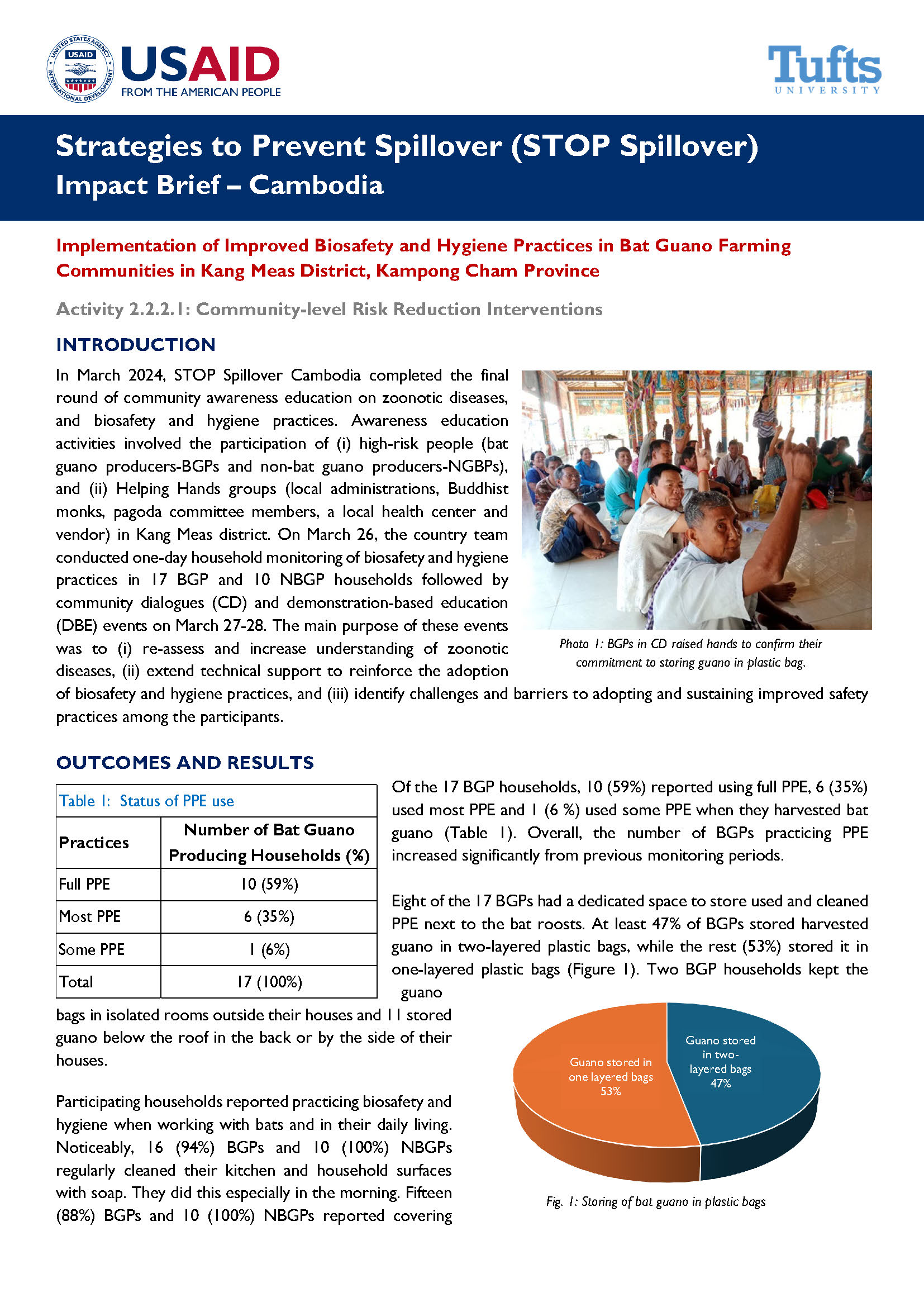
This brief summarizes household monitoring of biosafety and hygiene practices in some households that harvest bat guano and others that do not, as well as community dialogues and demonstration-based education events focused on reinforcing the adoption of biosafety and hygiene practices.
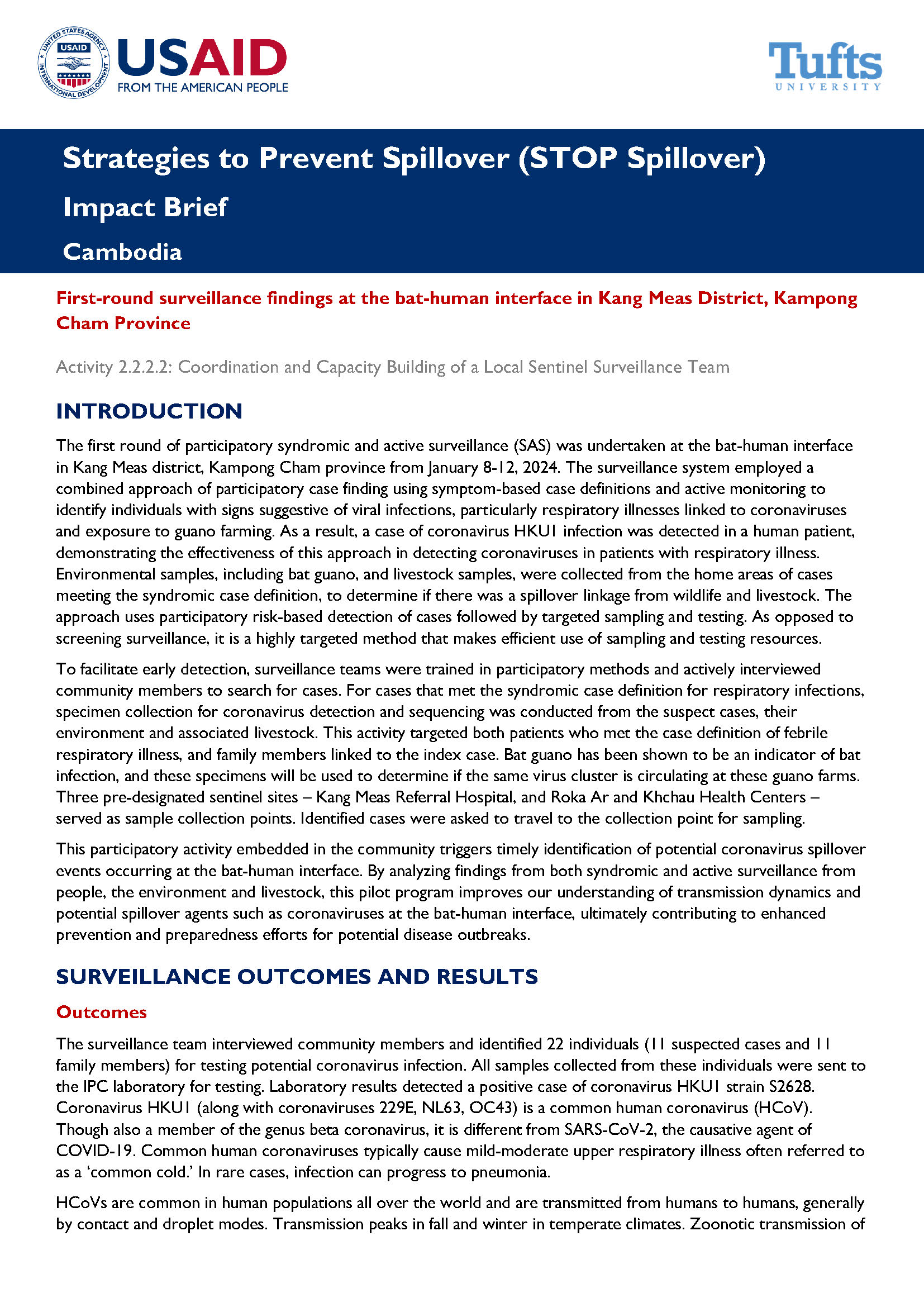
This brief summaries the first round of participatory syndromic and active surveillance undertaken at the bat-human interface employing a combined approach of participatory case finding using symptom-based case definitions and active monitoring to identify individuals with signs suggestive of viral infections (especially respiratory illnesses linked to coronaviruses) and exposure to guano farming.
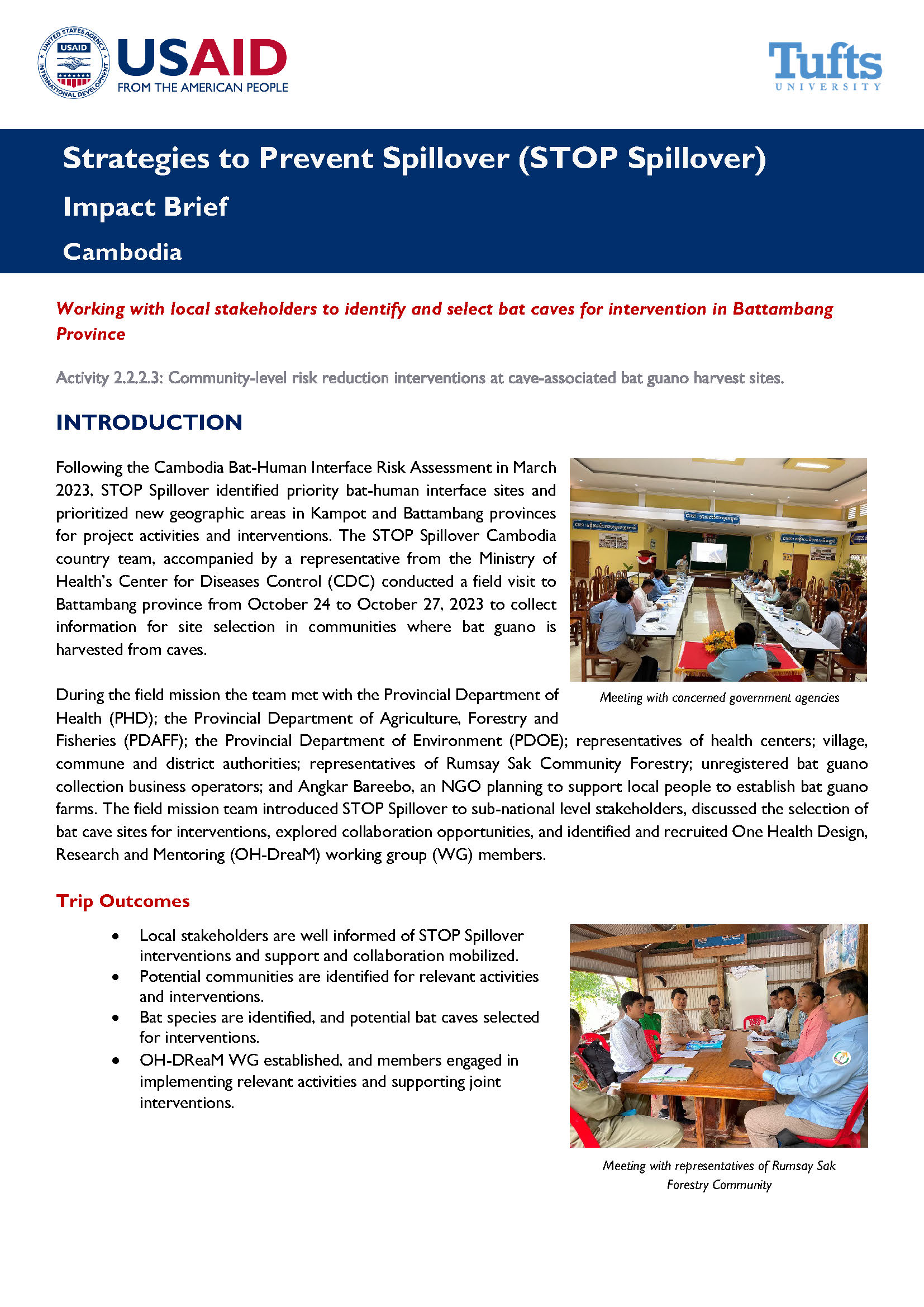
This brief describes a field visit by the STOP Spillover Cambodia Country Team to Battambang province to collect information for site selection in communities where bat guano is harvested from caves.
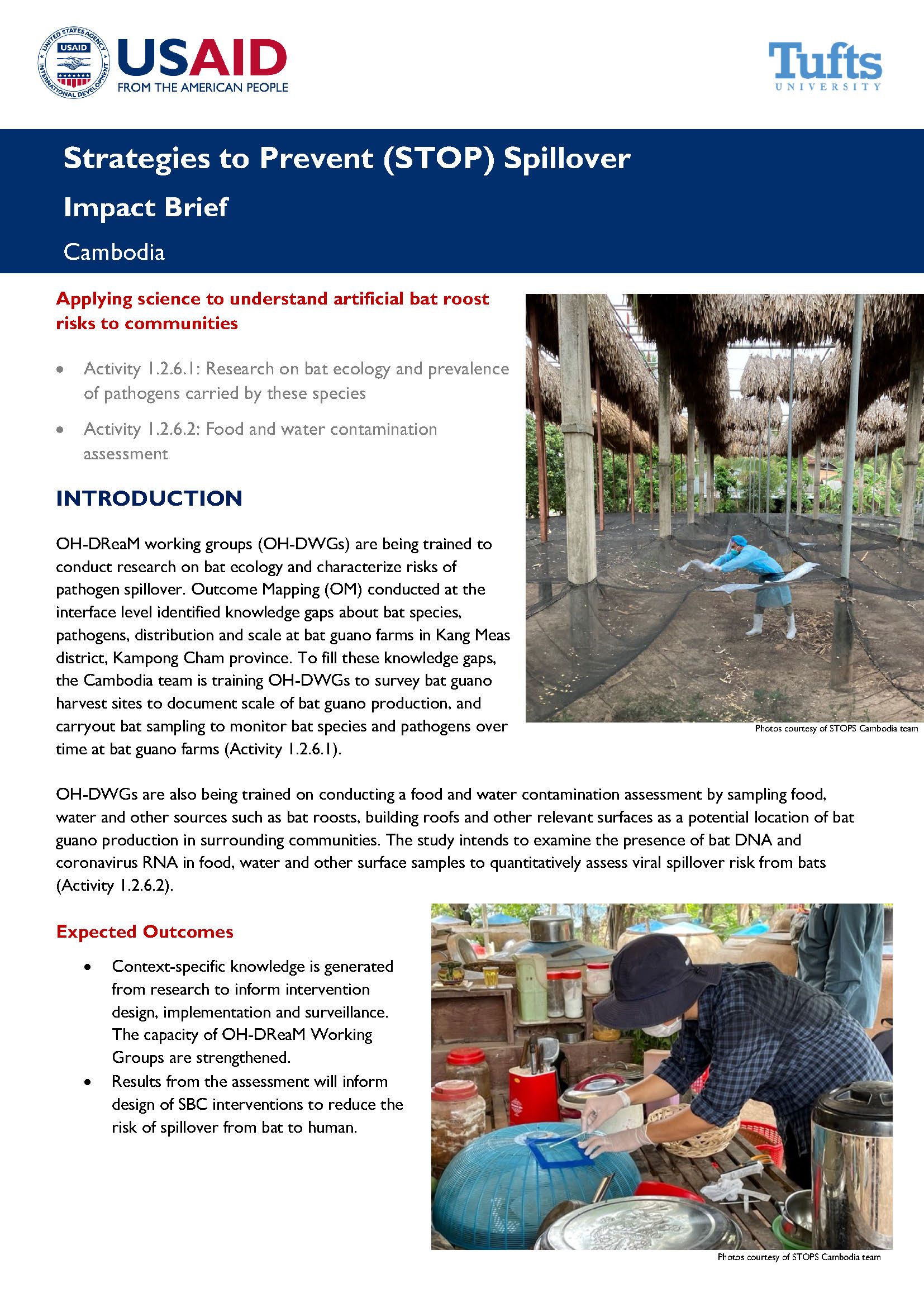
Impact Brief: Applying Science to Understand Artificial Bat Roost Risk to Communities
This brief describes training held to prepare One Health-Design Research and Mentorship (OH-DReaM) working group members and STOP Spillover Cambodia team members to survey bat guano harvest sites and carry out bat sampling at bat guano farms. Participants were also trained to conduct food and water contamination assessment in surrounding communities to quantitatively assess viral spillover risk from bats.
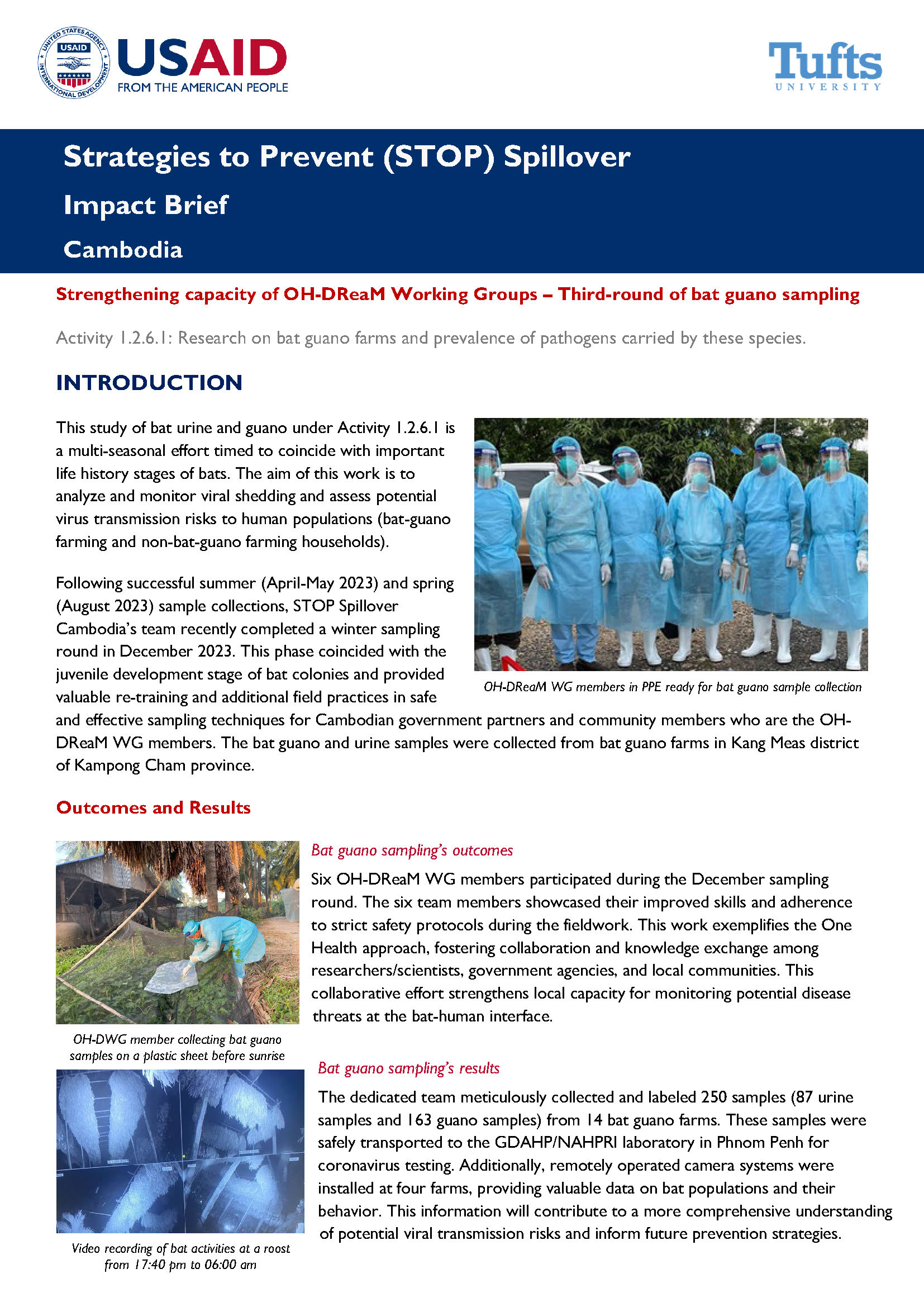
Impact Brief: Strengthening Capacity of OH-DReaM Working Groups: Third Round of Bat Guano Sampling
This brief describes a study of bat urine and guano that focused on analyzing and monitoring viral shedding and assessing potential virus transmission risks to human populations (i.e., bat-guano farming and non-bat-guano farming households).
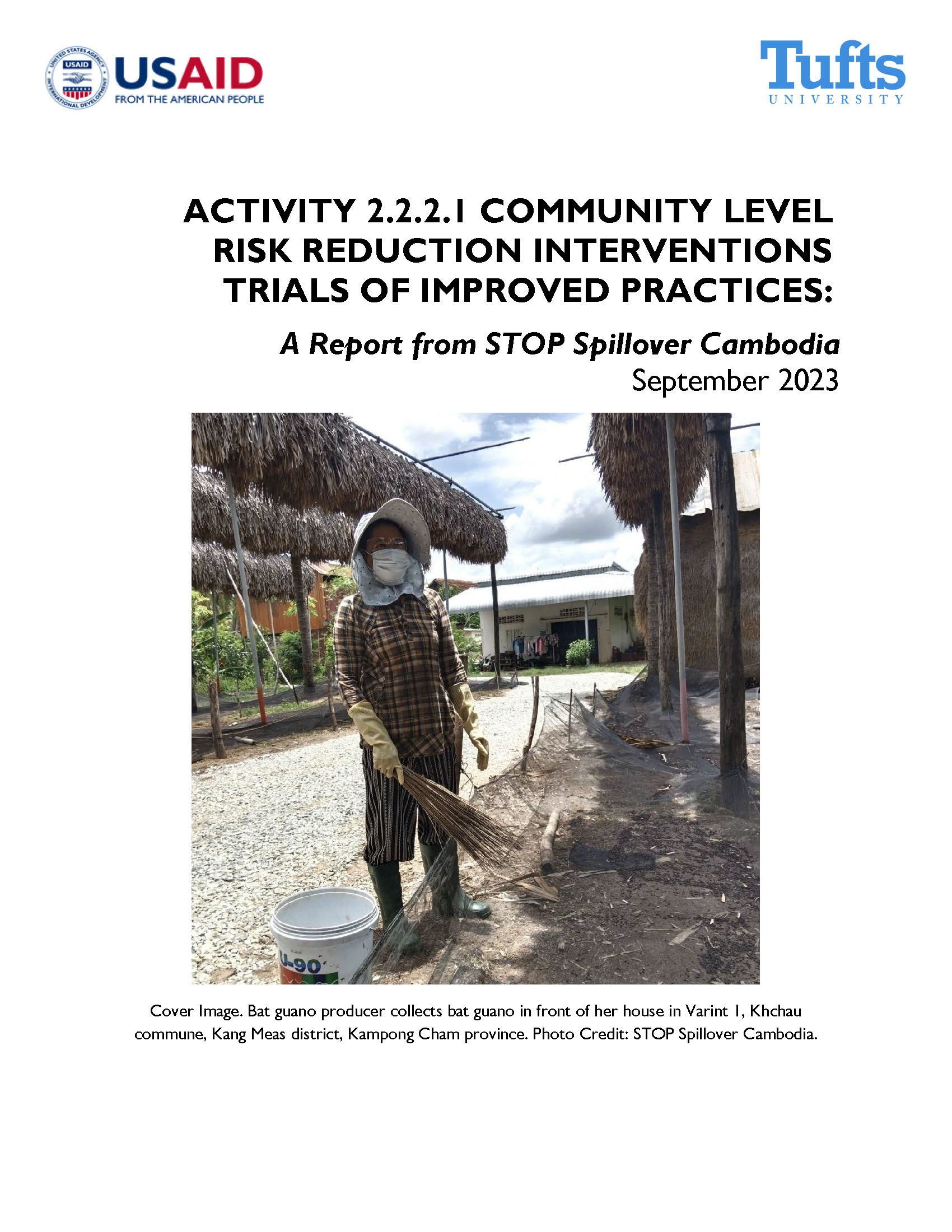
This report describes formative research conducted by STOP Spillover in Cambodia in which bat guano producing families and their neighbors in a high-risk bat-human interface tried to implement or improve their practice of priority risk reduction behaviors.